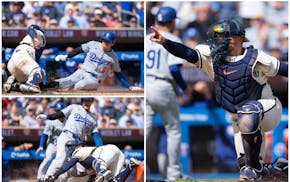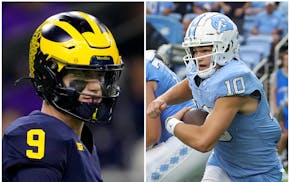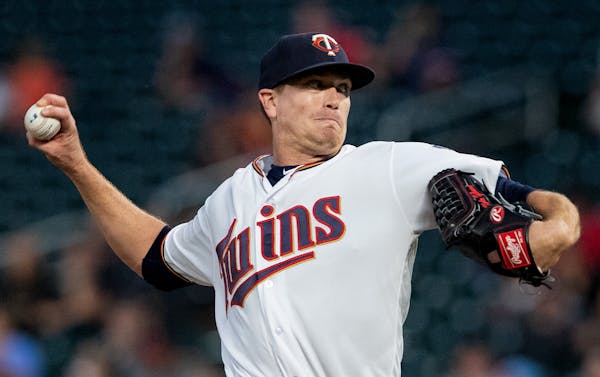The young Twins centerfielder was struggling to hit big-league pitching when the organization demoted him to the minors and then declined to bring him back to the majors as a September call-up.
"I was sitting in Triple AAA, not knowing what I'm doing," Aaron Hicks recalled on Monday. "I was kind of lost."
Hmmm, sounds familiar. Yep, Hicks knows how Byron Buxton feels.
Hicks was supposed to be the Twins' next great centerfielder before that same label was attached to Buxton. Now Buxton's career is floundering, just as Hicks' career floundered before being traded to the New York Yankees in 2015 at age 26.
Fast forward three years. Hicks is back at Target Field this week, site of his Major League debut. He struck out his first three at-bats that day, foreshadowing an unfulfilling tenure in a Twins uniform. The team ultimately traded him to the Yankees for catcher John Ryan Murphy, who has a cool name but couldn't hit, to clear way for Buxton's arrival.
That trade made sense at the time. In hindsight, the Twins lost that one in a rout.
Hicks has found his footing as a major league hitter, his power production improving dramatically the past two seasons. He already has set career highs in home runs (24), extra-base hits (42) and RBIs (68) this season. He batted second in the lineup Monday and went 1-for-4 with a single and two walks.
Hicks represents example 1,202,982 that baseball development works at its own pace and on its own timeline. The tricky part for teams comes when deciding whether they should continue to show patience or cut bait.
Hicks offers unique perspective on Buxton's sluggish development because he's been there, done that.
"I still think he's going to be a great player," Hicks said. "It's going to come. He's too good of an athlete, too good of a player to not succeed in the big leagues. It's just being patient with him. It's all about finding that confidence in himself and his abilities.
"It's happened before. It's not like he can't be the player that we all expect him to be. It just takes time. Some people take longer than others. I believe that's him."
In Hicks' case, the Twins rushed him too fast to the majors. He wasn't ready for everything thrown at him.
"In spring training I felt like I was ready for the big leagues," he said. "But spring training isn't the same as regular season. The adjustments that I needed to make, I wasn't ready for them."
Hicks also didn't help himself along the way. He stunned the team when he showed up one day in 2014 and announced that he would no longer be a switch-hitter because he was abysmal from the left side. There were other signs of immaturity.
A stern phone call from Rod Carew changed Hicks' mind about switch-hitting.
"Once I got that call I realized that I was making a horrible decision," Hicks said. "I was trying to do what I can to help my team win. Once I made decision to go back, it opened my eyes to how hard it is for righty on righties to hit and that I'm better off being a switch-hitter."
Hicks overhauled his entire approach in New York. He stopped worrying about hitting for average and focused on hitting for power and getting the ball in the air. He became better at laying off pitches down in the zone that he flailed at early in his career. Those changes, along with more experience, helped him become a credible hitter, especially from the left side. He's hitting .262 with 15 home runs against righties this season.
Hicks turns 29 in October. He's developed into a productive two-way player and top-of-the-order hitter on one of the best teams in baseball.
Playing in the New York pressure-cooker can be suffocating for a young player still trying to prove himself. For Hicks, the big stage is where he established that he belongs.
Chip Scoggins • chip.scoggins@startribune.com

Scoggins: Finch feeling heat of the Suns as playoff battle looms
Scoggins: Why 'championship or bust' fits these Wolves

Scoggins: Anatomy of a game-saving play as Correa throws out Ohtani


